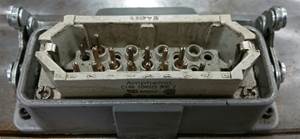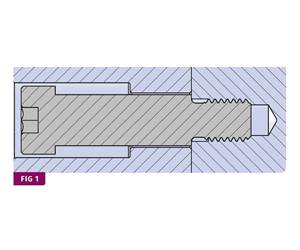Mold Maintenance Training Eases Molder's Growing Pains
Automation Plastics in Aurora, Ohio (automationplastics.com), is a 32-year-old custom injection molder with 50,500 ft² and 30 presses from 35 to 700 tons.
Automation Plastics in Aurora, Ohio, is a 32-year-old custom injection molder with 50,500 ft² and 30 presses from 35 to 700 tons. Expertise in building and maintaining complex, precision tooling is the heart of its molding business. That’s because the biggest chunk of its market is producing small, tight-tolerance valves and pumps for aerosol packaging. In the first eight months of this year, Automation Plastics molded 2 billion of these parts (mostly of nylon and acetal) for just one major customer.
“We specialize in building fussy, tight-tolerance tooling that not every moldmaker can handle,” says Jerome Smith. “Molds with tiny pins and holes as small as 0.007 in. These tools can have up to 160 cavities and produce up to 240,000 parts/hr, 500 million parts a year, running on cycles as short as 4 sec. Besides tiny holes that must be flash-free, they can have dimensional tolerances of ±0.001 in. and sealing surfaces 0.010-in. wide with flash allowances of 0.003 in.”
The company employs seven tooling technicians. It sent all seven to a one-of-a-kind training facility an hour’s drive away in Ashland, Ohio. Called ToolingDocs (toolingdocs.com), it was started two and half years ago by Steve Johnson, Mike Burroughs, and Randy Winton, all highly experienced in managing toolrooms for leading medical/pharmaceutical and packaging companies. They offer two- and five-day training programs for Level 1 and 2 Mold Repair Certification. These programs combine classroom discussion with hands-on practice in a fully equipped toolroom designed as a model of ergonomic efficiency. ToolingDocs also imparts a philosophy of mold maintenance that goes beyond hardware and technique.
ToolingDocs Level 1 and 2 certificates hang on a wall in the Automation Plastics toolroom. Three of its executives also attended special training for tooling managers. The first of these was Jerome Smith, sales and engineering manager. “He came back from the program with a vision of where we needed to go,” says company owner and president Harry Smith (no relation). “The training gave us a framework to help us get better at what we do,” says Jeff Dininger, Sr., former toolroom manager and now senior manufacturing engineer. “We’re getting more organized—especially with standardized methods of documentation.”
Rob Stanley, a 15-year veteran tool tech, agrees on the need for better documentation. 'You need a system. Otherwise you forget—what did I do to that mold?"
“We’re getting more organized at all levels,” says new toolroom manager Richard Grimm. “Spare parts, even bolts, are being tagged with part numbers. We don’t want to have a mold down because we can’t find a 50¢ screw.”
He is implementing another facet of ToolingDocs philosophy: “I’m pushing guys out of the toolroom into the molding area. It avoids the tooling-vs-processing, us-versus-them mentality and it gives guys more sense of ownership of the tool.”
Rob Stanley agrees: "That was one thing I learned at ToolingDocs—get as much info as you can on the mold before you work on it. Go out on the molding floor and find out how the tool was running."
Even the most experienced toolroom veterans picked up a few tips at ToolingDocs. Besides learning about techniques like laser welding and improved methods of mold cleaning, they absorbed important lessons about efficient bench layout, with all tools right at hand—“so we don’t waste time walking around to get things”—and having air, water, and drain utilities located right on the bench for water-flow and leak checks. Automation Plastics had four mold-maintenance benches built to order at a cost of around $5000 each, complete with tools and utilities. “Those new benches were a lifesaver,” says Harry Smith. “They arrived just as we got busy and quadrupled our toolroom work space.”
“We went through a huge growth spurt last summer,” explains Jerome Smith. “We experienced 50% growth in six months. We took in lots of transfer molds, some of them built overseas. Forty new tools came in—including 10 big, complex transfer tools from our biggest customer—and 30 new tools went into production for the first time. I don’t know how we would have survived without the new benches.”
Related Content
Hot Runners: How to Maintain Heaters, Thermocouples, and Controls
I conclude this three-part examination of real-world problems and solutions involving hot runners by focusing on heaters, thermocouples, and controls. Part 3 of 3.
Read MoreHow To Design Three-Plate Molds – Part 4
There are many things to consider, and paying attention to the details can help avoid machine downtime and higher maintenance costs — and keep the customer happy.
Read MoreWhy Shoulder Bolts Are Too Important to Ignore (Part 2)
Follow these tips and tricks for a better design.
Read MoreWhat You Need to Know About Leader Pins and Bushings
There’s a lot more to these humble but essential mold components than you might suspect. Following the author’s tips could save much time, money and frustration.
Read MoreRead Next
For PLASTICS' CEO Seaholm, NPE to Shine Light on Sustainability Successes
With advocacy, communication and sustainability as three main pillars, Seaholm leads a trade association to NPE that ‘is more active today than we have ever been.’
Read MoreMaking the Circular Economy a Reality
Driven by brand owner demands and new worldwide legislation, the entire supply chain is working toward the shift to circularity, with some evidence the circular economy has already begun.
Read More




















